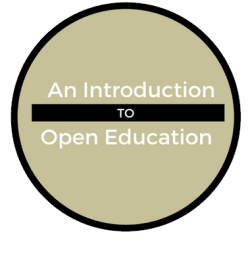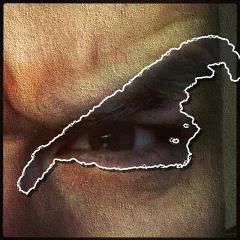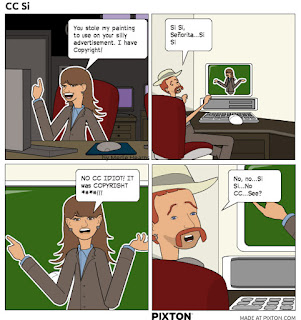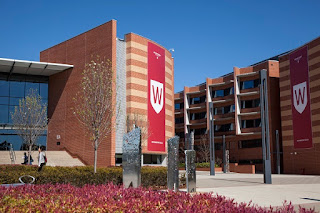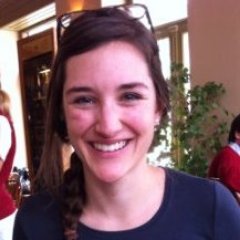The fellowship requires an action research project that is grounded in current literature, feasible and under 500 words.Looking for a Killer research idea on #OER to get into the running for a fellowship @eCampusOntario … Interested? https://t.co/4OAt22ZrKZ
— Laura Killam (@NurseKillam) October 3, 2017
The Initial Idea
As mentioned in previous posts I am surrounded by people who both support OER and caution against it. In the month leading up to the strike on campus I spent a lot of time talking to people on both sides of this debate over OER. It felt like my biggest problem was dealing with anti-OER people on campus. A team of us got together and came up with an idea. We wanted to focus on identifying the perceived risks of OER among faculty at our institution using Q-methodology. While opinions of OER are known in the literature we do not know what faculty at our institution thinks beyond anecdotal evidence. We would gather the discourse on OER perceptions and narrow it down to a representative list of statements around “What are the most significant barriers for you in the adoption of OER.” Q-methodology asks participants to sort a set of statements that are subsequently grouped together mathematically. For the fellowship, this approach was best conducted by a team since the intent was to use the identified perceptions to develop professional development opportunities for faculty that would address the identified barriers using existing literature in a workshop type format. An additional component of the study could be to measure the effectiveness of the professional development activities, but that portion of the idea was not flushed out before the strike began. The original idea would be feasible for me because of my experience with Q-methodology. However, in an information session about the fellowship we learned that we cannot apply as a team. It was also suggested that this idea may not fit with “action research” for me in my current role as a course professor. Since the idea was vetted by my institution we may move forward with it anyway, but not for the fellowship proposal. Two of our team members are submitting separate research ideas.#Doodles in action. Learning about #OER fellowship through @eCampusOntario with @livingkatstone @jennihayman @JessicaOReill17 @melyoung00 pic.twitter.com/4n1XGS3DXZ
— Laura Killam (@NurseKillam) October 10, 2017
Action Research
Action research is meant to solve immediate problems faced by educators like me in an attempt to constantly improve (Ferrance, 2000). There are different types of action research. The idea above would fit with a group approach, but I feel the need to focus on something more closely tied to my own teaching. As a new adopter of OER in the classroom I am faced with the issue of finding something to research that would also add something meaningful to what is known in the broader literature since I want to use it for ongoing scholarship. I must find a problem that is both relevant to my current context and a gap in current literature. Step 1: Identification of a Problem Coming into this week’s content I was still thinking of focusing on the perceived risks of OER, but I am not sure that would add enough to the literature after finding out about so much more research than I was aware of through the MOOC. Asking about perceived risks of OER is a more basic level question, which Wiley says has been done. What is Known In the video below, Wiley indicates that research shows that student outcomes are the same or better when comparing OER to Costly textbooks. The course then directs us to this page where it is quite clear that studying efficacy and perception has been done. I am really interested to see what comes out of the research Wiley discusses in the video above where he says his team is looking at if there is a difference in student outcomes when the teacher is involved in the development of OER or simply adopting it. That is really interesting and helps to answer, in part, the fear of faculty who are concerned about OER. Many of those fears could also be addressed in a few minutes on YouTube or by reading literature. I think Rajiv Jhangiani says it perfectly in the video below … Abundant literature exists suggesting the perceived and measured value of OER for students and educators. For me it is not a question of if OER is useful – I have logic and research to back that up. I have had too many students in my office crying over finances to ignore the impact of costly textbooks on their lives to ignore it. Identifying Gaps Downes questions the impact of OER on a student’s ability to develop relationships and contribute to society. He elaborates in a way that sounds to me more like questioning the influence of OER on openness as a mindset, which facilitates collaboration and making a meaningful contribution to society. That is a great idea, but way beyond the scope of an action research project. Or is it. If the focus of the research is on open pedagogy a qualitative study could explore student perceptions of how it changed their mindset. A lot of research has been conducted on OER. I tell my students that a good place to start looking for gaps is by reading literature reviews. Hilton (2016) calls for the replication of this study, and designs that overcome issues of potential bias in previous research. Quantitative evaluation in this way would be a good idea if I had something already in place that could be evaluated. However, one of my biggest challenges in nursing is finding open textbooks in the first place.Problems that I Face
YouTube and Creative Commons In a previous post I shared some of my concerns around making my YouTube channel fit the 5Rs of OER. Maybe I could look at the impact of Creative Commons licensing on the performance of my YouTube videos. There are so many variables to try and control for that I have no idea where to start. In a brief literature search it YouTube seemed to be the focus of many articles in relation to how patients and students use it as well as factors influencing popularity, but none that measured popularity or ranking in conjunction with the creative commons licensing. Much of the literature I came across was dated. YouTube is constantly updating their search algorithm so research would get dated quickly. Would anyone else even care about that? How many YouTube educators are out there? I am going to shelf that idea for now, but it is an interesting one for the future. Or, if anyone reading this blog post wants to help me flush out an idea we can try something. Open Pedagogy The review project notes a need to study open pedagogy, which is intriguing. Instead of studying the impact of a resource it would be interesting to study the next step – engagement in the 5R activities as a teaching tool. The textbook I have adopted needs to be adapted. Unfortunately as far as I know I will not be teaching a course where I could get students to help me adapt it within the time frame of the institute. Maybe I could get students to help me create OER as an assignment – an idea taken from one of the previous OpenEdMOOC course videos. Encouraged by reading Mays (2017) open textbook, it is worth a try. Two courses that I teach in January do not have current textbooks and could really use one. This idea is quite intriguing. It has been done before in environmental science. Why not nursing? It may be a huge success or a failure. Either way it fits well with an action research approach and will produce meaningful data and an OER! I could definitely use the support of eCampusOntario for something like that. The fellowship would be ideal. I struggled a little (okay a lot) with the design choice. There seem to be quite a few case studies in the book I am using to guide the implementation of my project. As I wanted to focus on the student experience it makes sense to take a qualitative approach, but I am not sure if that is realistic. Since I sit on the Ethics committee at my institution I know they would question the vulnerability of my participants while they are still in my course. It may be more ethical to do something quantitative … or return to Q-methodology in an electronic way. I am also not sure if I should study myself in some way as I engage in this process. I need to talk this idea through with someone! After some searching for methodologies I came across Narrative self-study. While I would prefer to involve student perceptions in the study I think I will focus on my experience – it will be more within my control to get participation that way and eliminate some vulnerability concerns for ethical review boards. The way it is described in this article (and some other non-open ones) seems to fit in a way that would add meaningful data to the literature. So here it is … the idea I will be submitting later this week in the application for the OER fellowship later this week (unless I change my mind again) … please critique it!!
congerdesign / Pixabay
My Proposal:
A narrative self-study of engaging in open pedagogy with students
Open Educational Resources (OER) have been shown to decrease student cost and improve student satisfaction, retention and graduation rates among numerous other outcomes (Hilton, 2016; Hilton, Fischer, Wiley, & Williams, 2016). In nursing, OER have been implemented in Sweden with some concern expressed about the quality and overwhelming nature of it (Elf, Ossiannilsson, Neljeso, & Jansson, 2015). Quality of OER, like books from big publishers, must be evaluated based on various factors including peer review (Gurung, 2017). Development of and peer review for OER is increasing. As Gallaway (2016) and Doan (2017) have identified, the most challenging barrier to OER use is finding appropriate resources. The Canadian Association of Schools of Nursing (n.d.) has identified potential sources of OER. Still, finding OER that fits the needs of a specific nursing course has been challenging given the limited peer-reviewed open textbooks and other resources available in specific content areas. Derosa and Jahngini (2017) recommends that educators partner with students to build OER as a way of modeling open pedagogy and offering students a way to derive meaning from their assignments. While several case studies exist, an in-depth understanding of how one navigates the challenges is needed in order to support novice educators attempting open pedagogical practices for the first time. This narrative self-study aims to unearth the lived experience of a nursing educator engaging in a collaborative open textbook creation project with students. Studying oneself is an innovative approach to research enhances the understanding of teaching practices (Hamilton, Smith, & Worthington, 2008). Consistent with this methodology and open pedagogy, reflective and open journaling through a blog will be used to document experiences. Open journaling will enable discussion of challenges through comments on the blog that will facilitate problem solving and alternate perspectives that will be used to prompt further reflection and enhance the rigour of the study. Key questions guiding the initial reflections are: What is the meaning behind experiences of facilitating a collaborative open textbook creation project? How are student reactions to the project shaping the educator’s view of it? What challenges are experienced? How can those challenges be navigated? What lessons can be derived from this experience? Further questions will emerge as the experience unfolds.
3dman_eu / Pixabay
References
Canadian Association of Schools of Nursing. (n.d.). Open educational resources for nursing. Retrieved from http://www.casn.ca/education/5656-2/ Derosa, R., & Jahngini, R. (2017). Open pedagogy. In E. Mays (Eds.), A guide to making open textbooks with students. Retrieved from https://press.rebus.community/makingopentextbookswithstudents/chapter/open-pedagogy/ Doan, T. (2017). Why Not OER?. Portal: Libraries & The Academy, 17(4), 665-669. Elf, M., Ossiannilsson, E., Neljesjö, M., & Jansson, M. (2015). Implementation of open educational resources in a nursing programme: experiences and reflections. Open Learning: The Journal of Open, Distance and e-Learning, 30(3), 252-266. doi: http://dx.doi.org/10.1080/02680513.2015.1127140 Ferrance, E. (2000). Action research. Retrieved from https://www.brown.edu/academics/education-alliance/sites/brown.edu.academics.education-alliance/files/publications/act_research.pdf Gallaway, T. O. (2016). OER Commons. Charleston Advisor, 17(4), 35-38. doi:10.5260/chara.17.4.35 Gurung, R. A. R. (2017). Are OE resources high quality?. In R. S. Jhangiani & R. Biswas-Diener (Eds.) Open: The philosophy and practices that are revolutionizing education and science (pp. 79–86). London: Ubiquity Press. doi: https://doi.org/10.5334/bbc.f. License: CC-BY 4.0 Hamilton, M. L., Smith, L., & Worthington, K. (2008). Fitting the Methodology with the Research: An exploration of narrative, self-study and auto-ethnography. Studying Teacher for Education, 4(1), 17-28. Hilton, J. (2016). Open educational resources and college textbook choices: A review of research on efficacy and perceptions. Education Technology Research and Development, 64(4), 573-590. https://doi.org/10.1007/s11423-016-9434-9 Hilton, J. Fischer, L., Wiley, D., Williams, L. (2016). Maintaining momentum toward graduation: OER and the course throughput rate. International Review of Research on Distance and Open Learning, 17(6), 1-10. Mays, E. (2017). A guide to making open textbooks with students. Retrieved from https://press.rebus.community/makingopentextbookswithstudents/